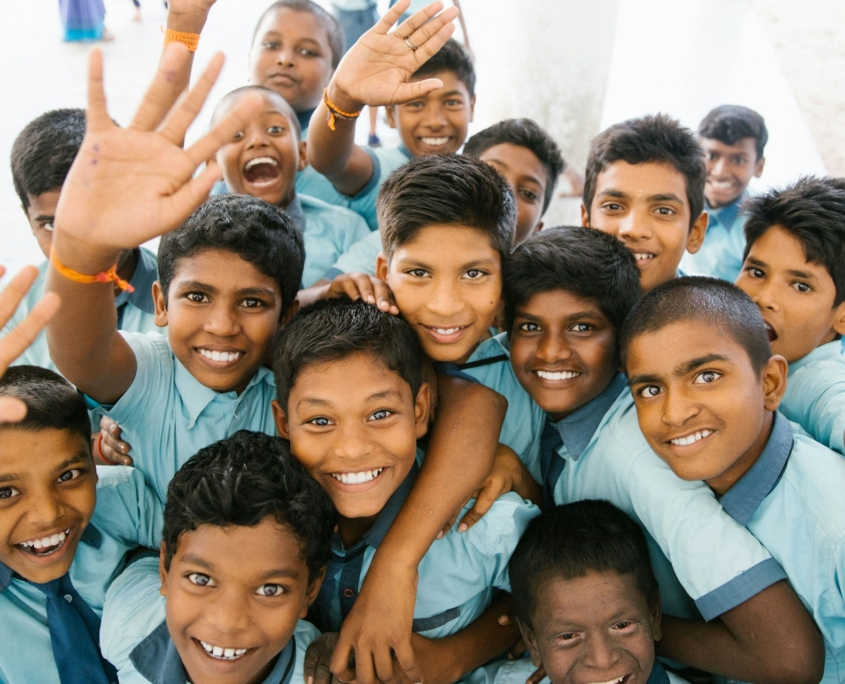3 Initiatives Improving India’s Literacy Rate
 India’s literacy rate has seen significant improvement in recent years, reducing the correlation between poverty and illiteracy. In 1981, the overall literacy rate stood at 40.67%. In a study ending in 2022, around 40 years later, it had risen to 76.32%. Additionally, studies reveal that illiterate people in the later statistics are mostly elderly people, indicating that illiteracy among younger generations has been largely eradicated. These encouraging statistics result from multiple literacy initiatives proposed by the Indian government. Here are three programs that have made a notable difference.
India’s literacy rate has seen significant improvement in recent years, reducing the correlation between poverty and illiteracy. In 1981, the overall literacy rate stood at 40.67%. In a study ending in 2022, around 40 years later, it had risen to 76.32%. Additionally, studies reveal that illiterate people in the later statistics are mostly elderly people, indicating that illiteracy among younger generations has been largely eradicated. These encouraging statistics result from multiple literacy initiatives proposed by the Indian government. Here are three programs that have made a notable difference.
National Literacy Mission
The Government of India founded the National Literacy Mission in 1988. The initiative focuses on two main projects: The total and post-literacy programs. The Total Literacy Program focuses on teaching adults basic literacy. The second program was implemented afterward and is aimed at neo-literates. This means people who have picked up literacy skills in an informal setting later in life. The Continuing Education Program is the Mission’s third program. It provides spaces such as reading rooms and libraries for the members of the programs.
The National Literacy Mission has covered more than 597 districts and when including all three programs, the NLM has covered 150 million neo-literates. Additionally, 125.6 million people have been made literate through this program. Gender disparity is another crucial aspect of this program, as the initiative comprises 60% female to 40% male counterparts. There is also a focus on working with India’s most underprivileged, working with 23% of learners from the Scheduled castes and 12% belonging to the Scheduled tribes. This project is ongoing, but significant progress has been made, with a jump from 52.21% literacy in 1991 to 65.37% in 2001.
Padhe Bharat Badhe Bharat
Padhe Bharat Badhe Bharat (PBBB) is a literacy initiative that was founded in 2014. It focuses on children within government schools, working with them to solidify their reading and writing skills to set them up for higher education. The program also works with teachers to help train and mentor them within the program. PBBB also aims to make reading a joyful and natural skill for children. The lessons are taught in their mother tongue and the Ministry of Education implements initiatives like the ‘100-Day Reading Challenge’ launched in 2022, which ensures that children are supplied with reading material in their native language. The program is made up of two components: system and classroom. This means emphasizing sufficient teacher training and learning material combined with the more intangible effort of having a supportive learning environment.
The Central Government has supplied specialized bridge material for tribal populations, free textbooks, supplementary reading and teacher training. The program aims to create a supportive and informed group of teachers and administrators who can help support their children as they progress through their education. Although PBBB is focused on early learning, the skills the students learn are made to be lasting and hugely foundational.
Beti Bachao Beti Padhao
Beti Bachao Beti Padhao (BBBP) was created in 2015 by the Prime Minister. It focuses on women’s empowerment, with the name meaning “save the girl child, educate the girl child.” The initiative is trying to shift how society views women and girls. Additionally, it strengthens their education and gives them a place in the world further than the home. The program has launched many successful initiatives. BBBP has implemented training programs for district-level officers and frontline workers. Some other notable progress is the organization of street plays in villages and markets in Pithoragarh that focus on the struggles that girls face in their lifetime, for example, abortion. The plays generate awareness of these issues in a more interactive sense than classes or pamphlets.
Additionally, the ‘Udaan – Sapneya Di Duniya De Rubaru’ scheme in the Mansa district allows girls to spend the day with a person of their desired profession (doctor, lawyer, etc). This program has been hugely successful, with the participation of more than 70 girls. The program also offers financial incentives and awards for girls in school. It creates guidelines and protocols to make schools safe and supportive for them. These are only a few examples of Beti Bachao Beti Padhao’s initiatives and this program only continues to support and empower women. Although this program is not strictly centered on India’s literacy rate, it creates an important precedent for future education and empowerment of women. Beti Bachao Beti Padhao allows women to grow beyond anything expected by creating supportive environments and opportunities for education and awareness.
Looking Ahead
These three initiatives have helped improve India’s literacy rate and empower underprivileged groups. These ongoing initiatives focus on adult and child literacy and emphasize gender equality and supportive educational environments. The National Literacy Mission has made significant strides in adult education. Furthermore, Padhe Bharat Badhe Bharat has laid a strong foundation for early childhood literacy. Beti Bachao Beti Padhao continues to empower and educate girls, changing societal attitudes. Together, these programs pave the way for India’s more literate society.
– Sofia Hattiangadi
Sofia is based in New York City, NY, USA and focuses on Good News for The Borgen Project.
Photo: Unsplash
